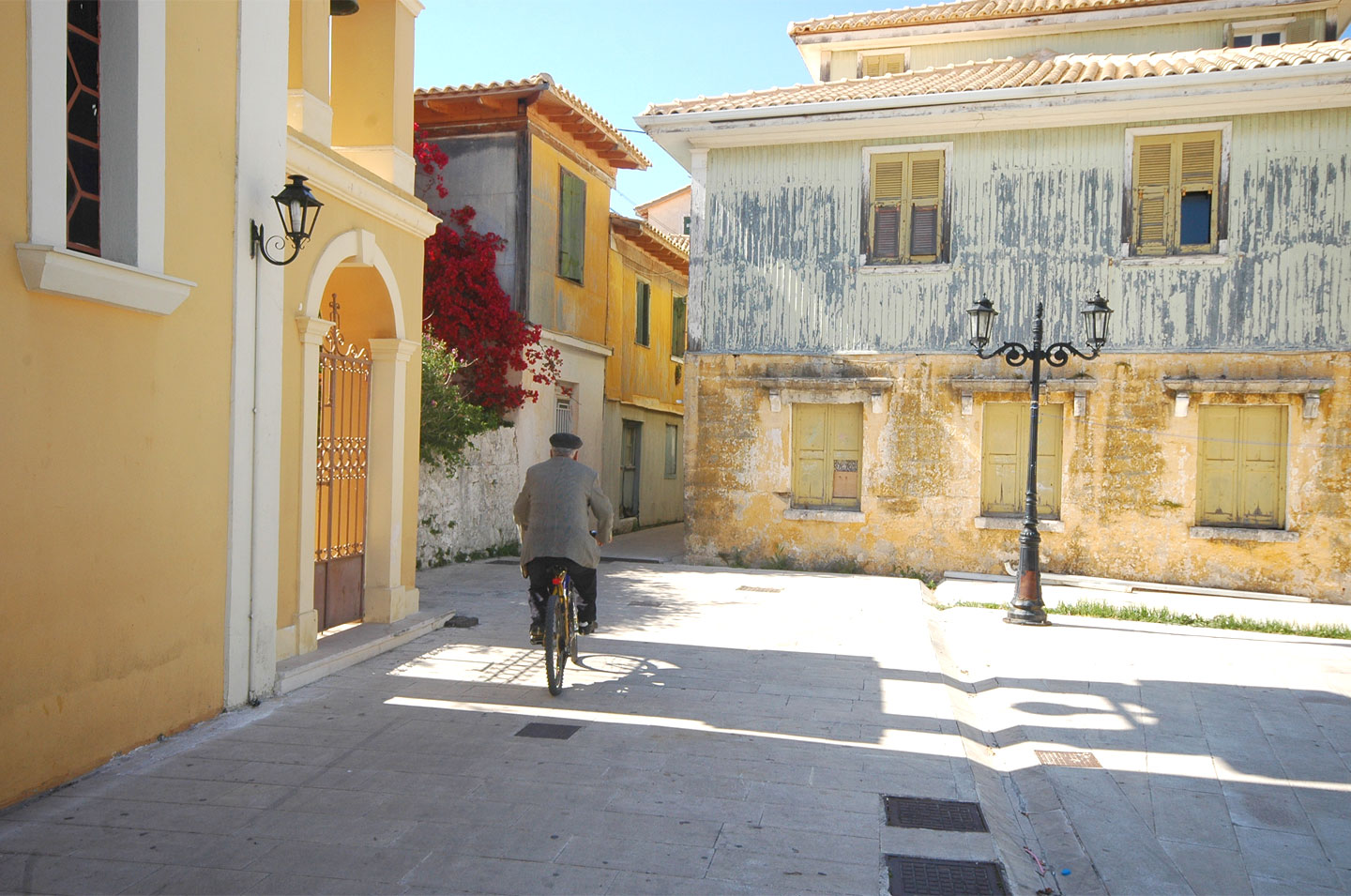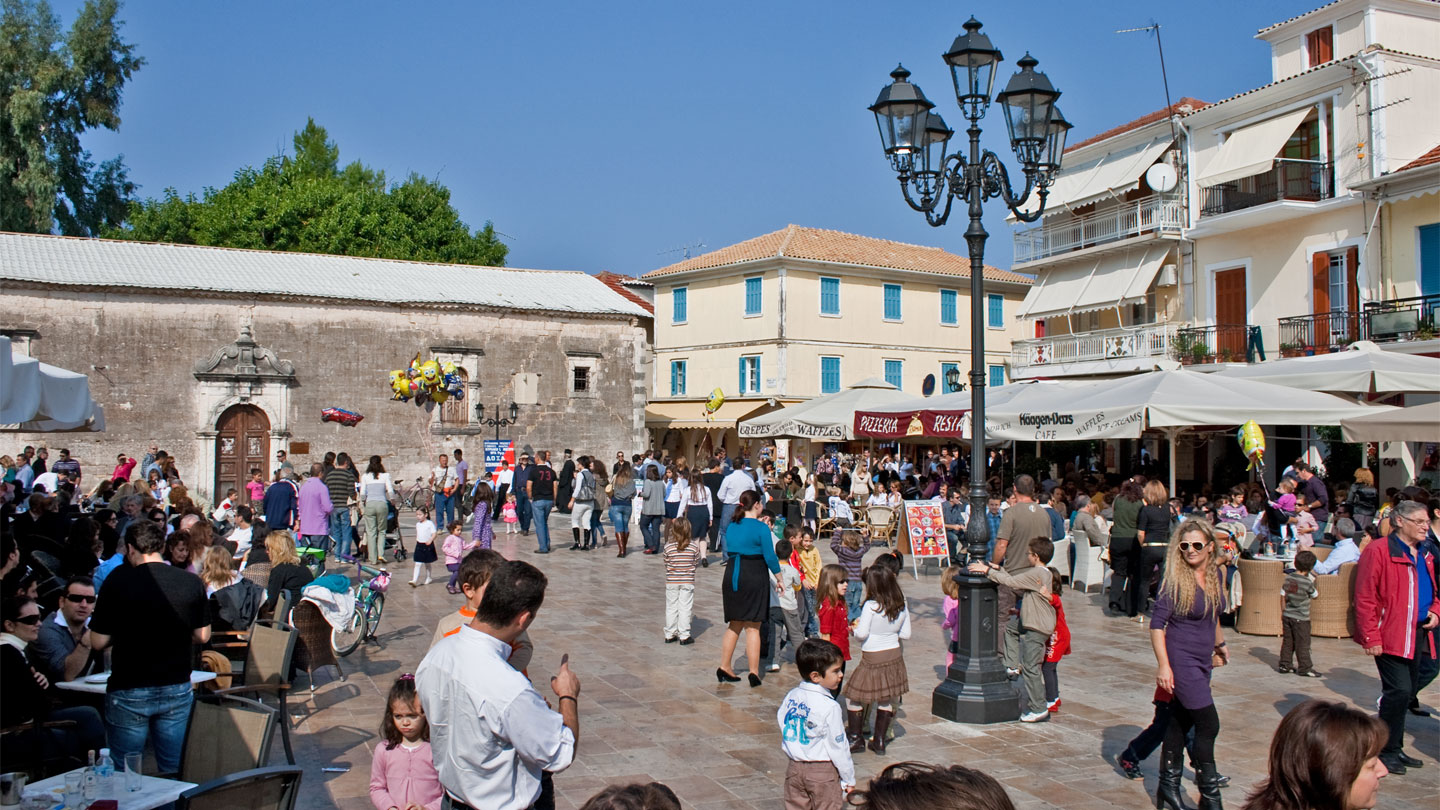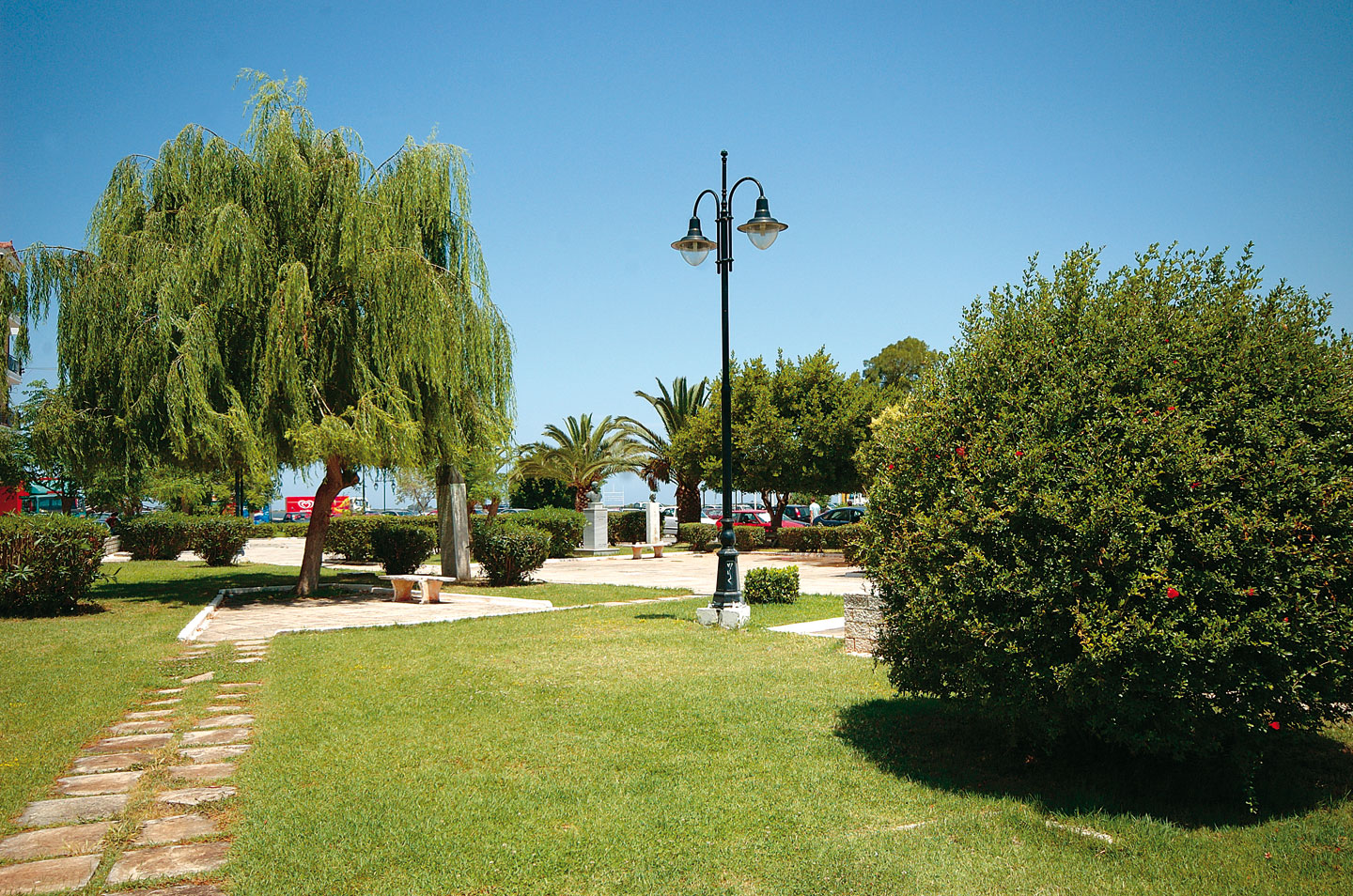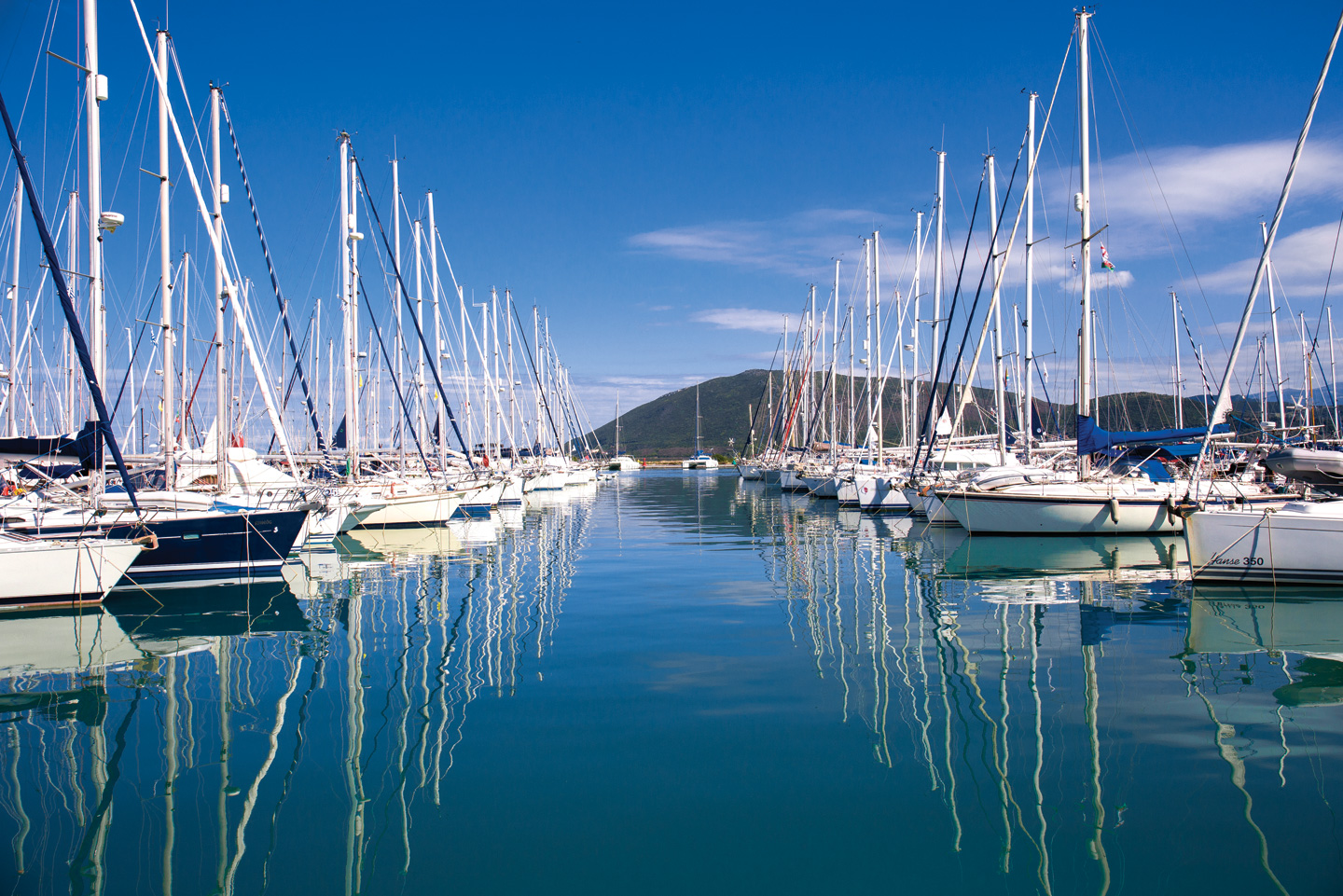

Lefkada‘s town plan is distinctive. After the devastating 1825 earthquake, the town was rebuilt according to British anti-seismic specifications.
The ground floor of the houses is stone masonry and the upper storey or storeys have a light wooden construction, with supports called pondella transferring the load directly to the foundations of the building and not to the ground-floor stone walls. The wooden frame is filled in with brickwork. In humble houses, this filling is of cheaper material, for example branches of dried broom, and they are plastered with lantsa, a mixture of lime, fine sand and water. On the inner side the overlay is plaster, also on the outside of the ground floor or, more rarely, it is left un-plastered.
The storey above is strengthened with boards, either with plaster board sheets or, (in later years) with the cheaper corrugated iron or, in some cases, it is left bare. The revetment provides protection against (high) humidity and gives thermal insulation. The use of sheet iron externally - nowadays painted a different colour for each house, gives the town its characteristic colourful appearance. The island’s proximity to Epirus brought its famed stone-workers to the island, where they left their stamp on the masonry, corner-stones, elaborate window frames and doorways, in churches and houses.


The town’s central square is surrounded by excellent examples of Lefkada’s architecture, such as the Stamatopoulos family’s three-storey building in the north-west corner of the square.

Until 1942, there was also a building in the traditional architectural style housing the Omonia Club. It was requisitioned in 1941 by the Italians (who optimistically named the square Piazza della Vittoria!) to house their officers’ club but it burned to the ground in 1943 in the raging fire which started from that very club.The church of Agios Spyridon dominates the square’s south-west side. The square is the venue for diverse public events such as the procession of the Easter biers and liturgies, concerts by the Philharmonic orchestra, pre-election gatherings of political parties and so forth.

Bosketo is the name given by Lefkadians to a small park on the seafront, displaying the busts of eminent authors born on the island: Aristotelis Valaoritis, Angelos Sikelianos, Lafcadio Hearn, Dimitris Golemis and the woman writer Kleareti Dipla – Malamou.
In recent years, the park is also called ‘the Poets’ Garden’. The unveiling of the bust of Valaoritis took place in 1925 with all the splendour and emotion befitting a national poet and leader of the people of Lefkada, with the participation of members of the government of the day, apt recitations of the poetry of Palamas, Sikelianos, Skedaresis and more, and a great gathering of people from all over Lefkada and the rest of Greece.

One of Lefkada’s most recent acquisitions is the marina, the most modern in Greece, situated on the east side of the town. Its mooring capacity is for 620 boats and its buildings comprise a control tower, a multi-purpose building, sailing club offices, a complex of offices and shops, a small hotel, a boat repair and maintenance facility, parking for 455 cars, winter mooring for 300 boats, a road network and a green belt. It has a 1700 metre - long breakwater and 940 metres of floating wharfs. It is a town within the town of Lefkada with its own life, bars and restaurants also frequented by non boat - owners to enjoy its comforts and the picture of the liquid mirror of the channel reflecting the rosy fingers of the sunrise and the mystique of the moonlight.